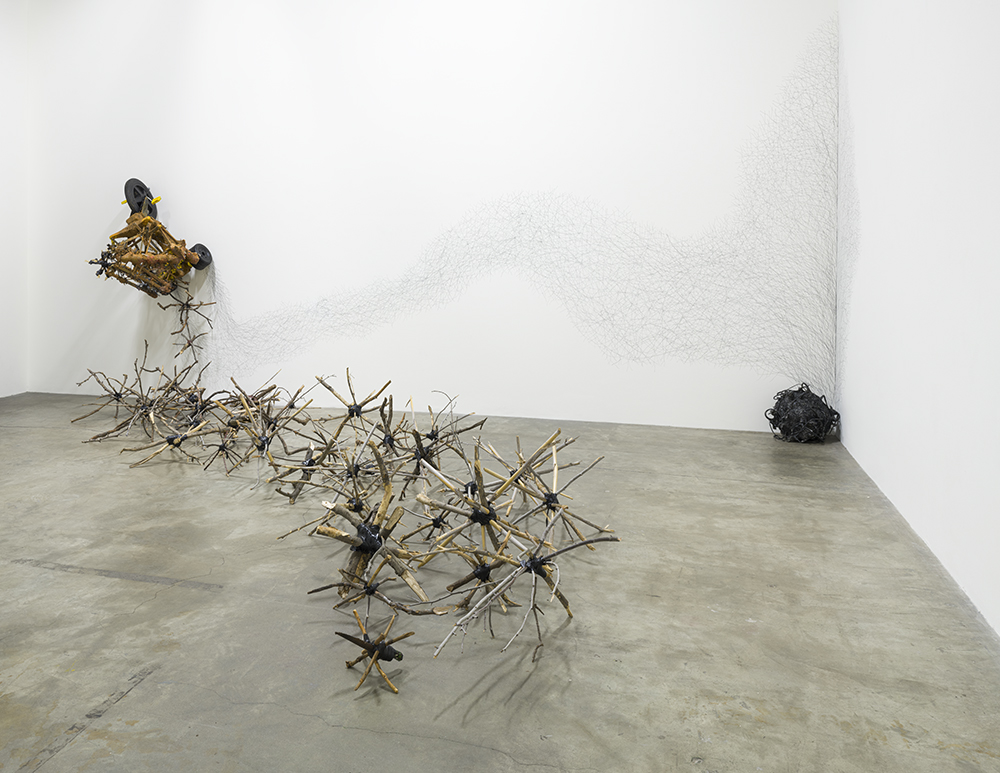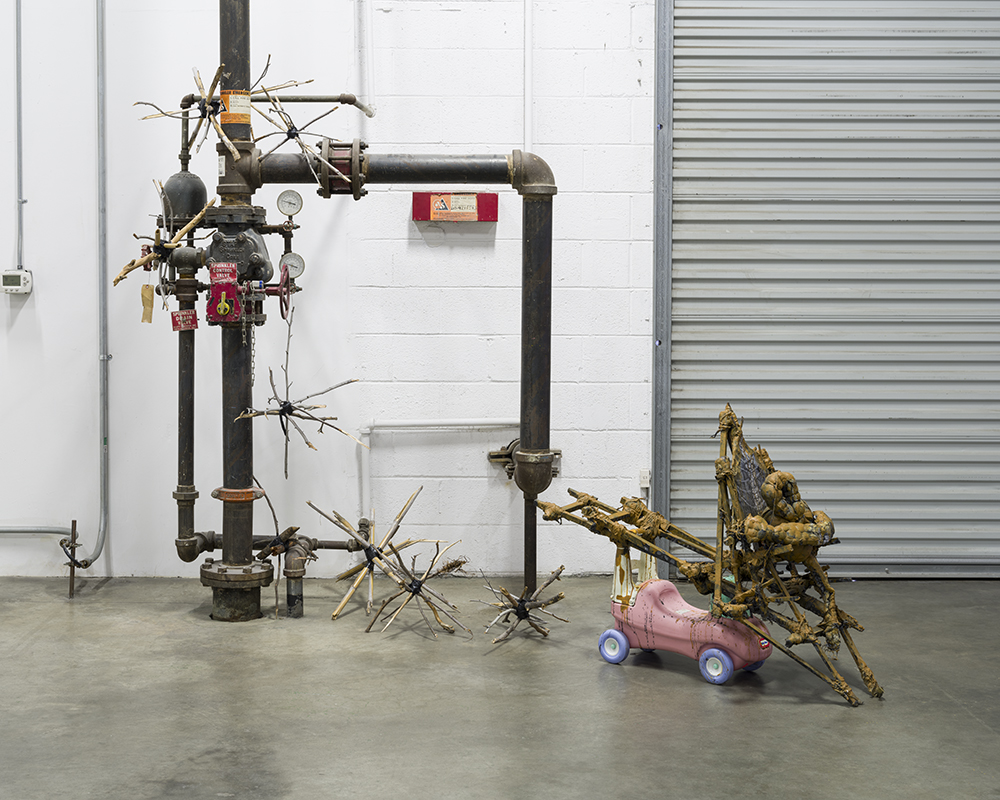The opening for Kim Jones’ exhibition had a kind of homecoming spirit, reflected in its title, “Walking Home.” Several of Jones’ first post-graduate performance pieces in the 1970s were marathon “walks” between various landmarks in Los Angeles, performed in the “Mudman” sculptural guise he devised out of sticks and twigs twined together with electrical tape, foam rubber, cheesecloth and chicken wire—a kind of wraparound lean-to—plastered to his body with mud and not a little of his own excrement. Some of the documentation for these performances is on display, along with sculptural constructions and installations built upon these constructions which he moved on to in later decades.
Conceivably his entire life led up to his practice—graduate education and early work in LA were turning points, as was his 1967–68 service as a Marine in Vietnam. A crippling childhood disorder sidetracked him into obsessively crafting diagrammatic war-game strategy drawings interspersed with cartoon incidents. (One of these drawings is collaged between figures in an untitled pen-and-ink drawing from 2009, reworked in 2020.) He has carried these forward long after graduate school into large, late-Renaissance style strategic plans of cities, fortifications and projected attack lines. There are four on view, executed and/or reworked between 1997 and 2021. The freestanding Stars, from the 1990s, which seemed to evolve in part from his “Mudman” constructions, actually bears a closer resemblance to the kinds of “hedgehog” snares deployed in anti-tank and mining defenses.

Kim Jones, “Walking Home.” Installation Image. 2023.
Courtesy of the Artist and The Box LA. Photo Fredrik Nilsen Studio.
Jones’ drawing style has evolved into a dense and heavily crosshatched, quasi- Victorian satiric style reminiscent of British illustrators Arthur Rackham, George Cruikshank and John Leech. Figures are rendered mostly in profile, frequently in disproportionate scale and distorted, emphasizing their character (but without the sort of irony or humor we might see in, say, Saul Steinberg). Extensions are frequently truncated, bodies dissected to expose segmented viscera. The conflict implied in his war-game/map drawings is frequently transferred to the figures, which present more than one “shadow” figure alongside a more prominent caricature-type subject. The effect is frequently magnified by the underdrawing of the war-game map. Using photos as a support adds another light and amplified dimension to some of these deeply interior, psychological drawings. Nonhuman figures are in short supply, though a toad occasionally prances into the picture.
Rats are a troubling obsession. Two iterations of Rat With Long Legs (2016)—large black rubber rats atop what look like abbreviated ski poles—flank a video of one of his “Mudman” walks from 1979. A tarry black ball of them, Rat Ball (2) (2008–09) sits in one corner. It’s clear that Jones has a dark, rather Manichaean view of the world, and certainly humanity. The quasi-human specimens of Jones’ imagination give birth to shadow or divided selves; conceivably evil or indifferent to it. Whether such specimens might be little more than “rats on stilts” (and this is not to excuse Jones’ horrific “performances” in 1972 and 1976) is a more tendentious proposition. Then, too, considering the political climate of the past few years, he may have a point.


